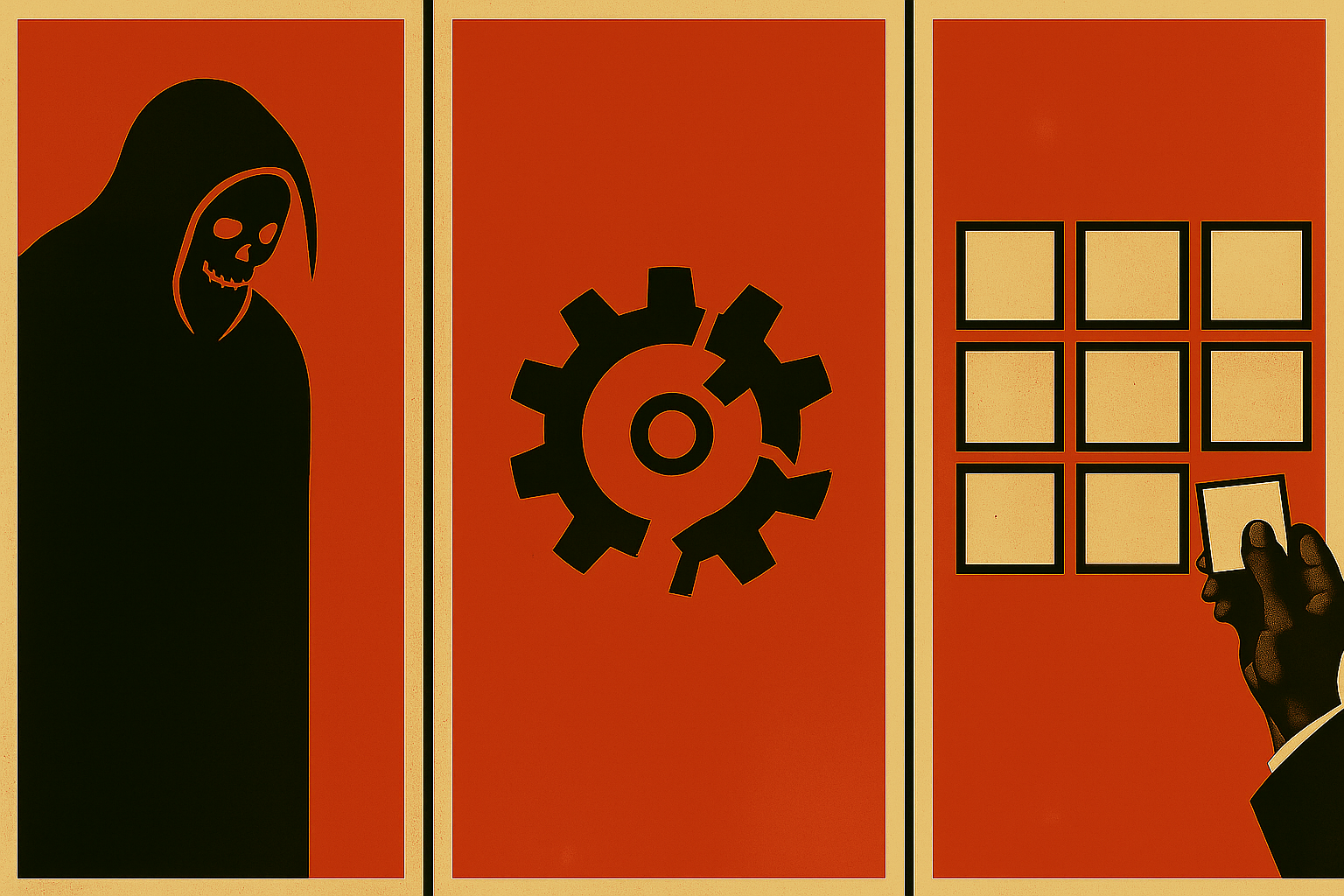Three channels in eight years. Two are dead; the third is barely alive. Creators don’t die from lack of ideas — they die from lost momentum, burnout, or the refusal to hit publish. I know because I buried my own. Over-prepared, over-spent, over-thought — I dug the graves myself. I learned the hard way that perfectionism kills, momentum breaks, and only systems save your channel.
Perfectionism Kills
In 2017, I decided to start a YouTube channel. The idea was simple: document a hobby I was already sinking time and money into. I had a topic I cared about, a steady paycheck, and money to burn. So I burned it.
I bought all the gear — and then some. A fancy camera, an expensive mic, a drone, the whole kit.
By early 2018, I had the concept worked out. I designed a logo, built a release schedule, wrote a business plan, and mapped out my first series of videos.
And yet, two years later, by December 2019 my channel had 0 views and 0 subscribers.
I never uploaded a single video. I spent those years circling the drain — reading, rewriting, re-editing, scrapping, repeating. Chasing “perfect.” The videos were never “ready.”
I wanted the launch flawless. No compromises. The result? A two-year-old channel with no videos, no viewers, no subscribers — only disappointment.
In early 2020, I forced the launch. I ignored the shaky footage, the bad thumbnails, the weak topics. Done was better than perfect.
Twelve episodes made it out. By the time the twelfth dropped, I knew it was the last.
COVID may have killed the channel’s premise, but perfectionism had already buried it.
Years of work, thousands of dollars spent, twelve episodes, and 29 subscribers to show for it.
Not the worst blunder of my career, but it still stings.
Momentum Breaks
By the time COVID restrictions lifted, I was in a new job on a new continent — living inside a guarded compound in Africa. No roaming around with expensive gear there.
What I did have was time. Weekends free. A reading list as long as the Nile. Old books, some out of print for decades. Then I found an article, more than a hundred years old, on a subject I was already obsessed with.
In less than an hour, I had the first three episodes sketched.
I was starting a podcast.
For nine straight Saturdays, I kept the streak. I’d finish the book I was reading, then record my voice into a beat-up office microphone. My “studio” was a blanket, two pillows, and a couple of couch cushions. It worked.
The podcast was niche on top of niche, but it brought me joy. And then I moved again.
Turbulent years. Asia. Europe. Africa. Asia, again. Four countries, three continents, three jobs — all in under three years.
Each move broke the rhythm. And because the show was never baked into a system, I couldn’t recover it. The gear was minimal, the prep was light — but without a structure to anchor it, the podcast collapsed the moment life pulled me away.
Momentum is hard to build, sometimes even harder to rebuild.
By the time I was ready to relaunch, I was back where I’d started in 2019. Full circle — and no podcast left standing.
Systems Save Your Channel
By 2023, I was back where I started: one dead YouTube channel and a broken podcast. Restarting either felt heavy — one required too much money, the other too much time. Both needed a serious reboot.
So I started fresh. A new YouTube channel. Less ambitious than the first, lighter than the podcast. A weekly video on another hobby I’d picked up — photography.
I’m now over sixty episodes in. The channel is still struggling to get traction, but it has potential.
This time I launched without over-planning — and learned faster than I ever had before.
Publish, learn, repeat.
I improved far faster than I ever did reading tutorials or obsessing over plans. Learning by doing works.
But I underestimated the effort. Publishing weekly without systems meant every video felt like starting from scratch. The schedule slipped, the backlog grew, and catching up became the routine.
One video blew up while I was on a business trip, and I had nothing ready to follow it. The spike died as quickly as it came. Inconsistency killed the chance to build momentum.
Forget the myth that “consistency is for the algorithm.” Audiences might forgive missed uploads, algorithms might look the other way. But YouTube won’t invest in you if you don’t invest in yourself.
Consistency is for you — to create momentum, to keep learning, to stay sharp, to catch the rare moments when the door cracks open. And consistency comes from structure: templates and checklists to cut decision fatigue, a backlog to absorb life’s chaos, and a release pipeline that makes publishing as automatic as possible.
Without those systems, you’re gambling on willpower. And willpower doesn’t scale.
Systems don’t just save time. Systems save your channel.
Zen Against The Machine
Through all of this — false starts, broken streaks, and hard-won lessons — I kept records. Every hour spent scripting, shooting, editing. Every dollar burned on gear I needed, and gear I didn’t.
Zen Against The Machine exists to track those lessons in real time. To build in public. To show how creative projects survive, fail, or adapt when tested in the wild.
The point isn’t to avoid mistakes. It’s to see them clearly, learn faster, and build with intent.
If you want to see what it really takes to build an online business without hype or shortcuts, stick around or start here: The Experiment Begins.
Take what’s useful for your project. Leave the rest.
